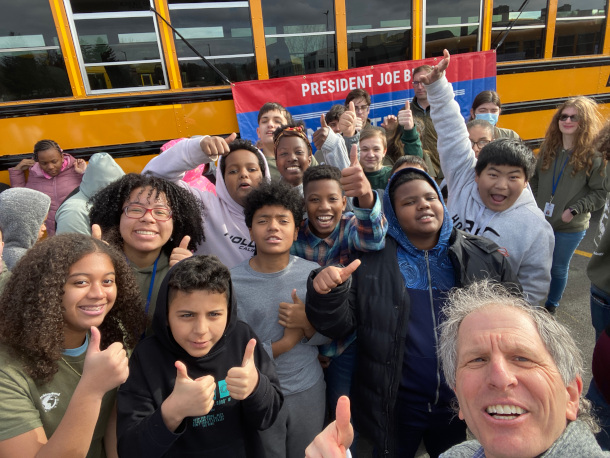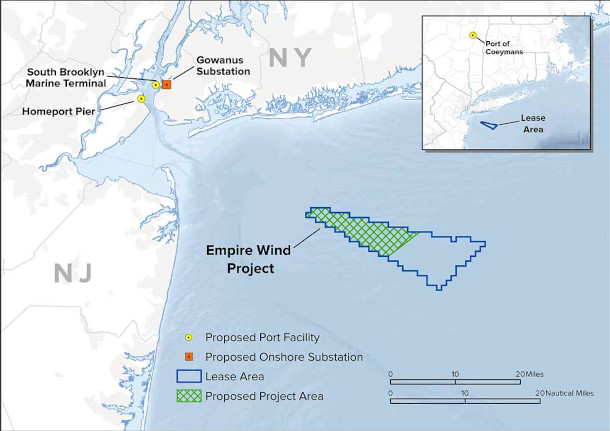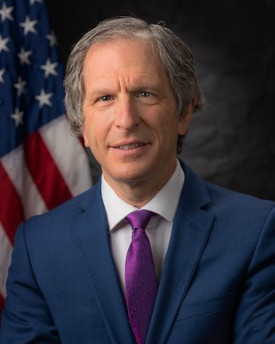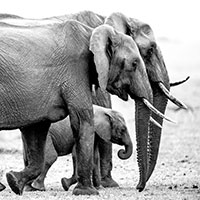Air Gets Worse
Air Date: Week of May 2, 2025

The 2025 California Palisades Fire, pictured above. Fires significantly contribute to both air pollution and climate change by releasing pollutants and greenhouse gases into the atmosphere. (Photo: Cal Fire, Wikimedia Commons, Public Domain)
The latest “State of the Air” report by the American Lung Association finds air quality has worsened so much that nearly half of people living in the U.S. now breathe unhealthy levels of air pollution. Soot and smog are on the rise in part because climate change heat is bringing more wildfires and low-level ozone-forming conditions. David Cash was the New England Administrator of the US Environmental Protection Agency under President Biden, and he joins Host Jenni Doering for an air quality update.
Transcript
BELTRAN: From PRX and the Jennifer and Ted Stanley Studios at the University of Massachusetts, Boston, this is Living on Earth. I’m Paloma Beltran
DOERING: And I’m Jenni Doering.
The latest “State of the Air” report by the American Lung Association finds that nearly half of people living in the U.S. breathe unhealthy levels of air pollution. The report examined air quality data from 2021-2023, during the Biden administration, and found that 156 million people are living in areas that received an “F” grade for either ozone or particulate pollution. That’s 25 million more people than in last year’s report.
BELTRAN: Exposure to ozone and particulate pollution, or “smog and soot” is linked to serious health impacts including heart attacks and strokes, preterm birth, and impaired cognitive functioning later in life. The American Lung Association says a person of color is two times more likely to live in a neighborhood with unhealthy levels of toxic air pollutants. And Latinos are nearly three times as likely to live in an area with failing air quality grades.
DOERING: David Cash was the New England Administrator of the U.S. Environmental Protection Agency under President Biden. And he’s grown increasingly concerned about how the Trump administration is dramatically reshaping the agency. David joined me to talk about this recent report and what in his view the federal government should do to protect Americans from unhealthy air.
CASH: You have to remember that when we first started getting the ball rolling seriously on air pollution was in the 1970s under a Republican administration, Richard Nixon, and when we put the Clean Air Act into place and the idea of that was for the federal government to regulate Cars and factories and power plants, such that our air would get cleaner and cleaner and cleaner over time, which it has. Some estimates are that 80% of soot and smog has been addressed over that time. There are still major pockets of air pollution throughout the country, mostly in industrial and urban areas, and that covers upwards of 140, 150 million people who are in these areas. And it's the responsibility of every administration to keep on figuring out how to reduce air pollution while we still maintain economic development and innovation. And every administration has done that, some better than others. In the last administration, the Biden administration in which I worked, we ratcheted down some regulations in such a way that we would continue to get the benefits of cleaner and cleaner air, and those benefits are huge, in the billions and billions of dollars every year in avoided health care costs and things like that. What we've seen the Trump administration announce is its plans to roll back those kinds of regulations.
DOERING: I think one of the things that was maybe surprising for people looking at this American Lung Association report is just seeing that air quality actually decreased from the previous year. Why is that? What's going on?
Donald Trump’s crusade against offshore wind just got more serious
— The Verge (@theverge.com) April 17, 2025 at 11:10 AM
[image or embed]
CASH: Yeah, there are a couple of reasons, and they can go back to climate change as driving those changes, because we have been slowly but surely cleaning up our cars and our power plants, things that come out of smokestacks. We have had a couple of events in the last year that really drove local air pollution. And you might have heard of the wildfires that were in Canada, wildfires out west, even wildfires on the east coast in the state that I'm in Massachusetts, had wildfires last summer unlike any we've experienced, and all of that contributes to poor air quality. You may recall the photographs that were seen over both cities and rural areas that just showed this orange kind of haze in the distance. What that haze is made up of are particles, and those particles, when you breathe them in, can make you sick. So, that was the primary driver. And by the way, the reason I said climate change is those wildfires, the intensity of those wildfires, the probability that we have those wildfires, increases because of climate change. The second piece is that climate change is resulting in warmer and warmer days, and when you have higher and higher temperatures, that soup of smog and other industrial chemicals combines in the hotter weather to form air pollution that causes these problems. So climate change is driving both wildfires that are dirtying the air and heat increases that result in greater air pollution at ground level.
DOERING: And just how many people are living with this unhealthy air according to the American Lung Association?

David Cash (bottom right), along with students living in Worcester, Massachusetts at an event celebrating the city’s new electric school bus. According to the Greater Worcester Community Foundation, about 12% of school-age children had asthma in 2018. (Photo: David Cash)
CASH: So the American Lung Association report shows that about 150 million, slightly less than half of the population of the United States, live in areas that experience these high levels of air pollution, and you won't be surprised to understand that Black and brown communities experience these high levels of pollution at greater rates than the general population. Low income communities, Black and brown communities, those who are in industrial centers, who are near manufacturing facilities, who are in transportation corridors, all experience these high levels of pollution at a much greater rate than the general populous does.
DOERING: Now what makes soot and smog so dangerous?
CASH: So there are a couple of different health impacts, and one of the most persistent and dangerous are really, really tiny particulates that come from industrial pollution, or that come from wildfires, and when you breathe them in they lodge in your lungs and the result is increased asthma attacks. The long-term effects can be heart disease, can be various lung ailments. So there are a lot of problems that can result from these. And then there are a whole host of kind of toxic air pollutants that can result in long term, can result in things like cancer.

Map of the Empire Wind lease area (blue outline) south of Long Island, with the proposed project area (green) and planned transmission route to Brooklyn. The Empire Wind Project owned by Norway’s state energy company Equinor was ordered to stop construction by the Trump Administration. (Photo: NYSERDA, Wikimedia Commons, Public Domain)
DOERING: And some of these particles from industrial pollution and wildfires are so small they can even, like, make their way into our blood vessels.
CASH: Yeah, no, that's right, they're tiny, tiny, and that's why they're so dangerous because it can really get in deep, deep into your lungs and then get into your blood.
DOERING: Now, what role does the EPA play in enforcing air quality standards and regulations?
CASH: Historically it's always played a very protective role. That's the job, the Environmental Protection Agency, designed to protect your health, my health, everybody's health, and the ecosystems upon which we depend. And there are a whole set of different regulations that EPA has done based on laws that Congress has passed, like the Clean Air Act, and working with the states, we enforce those. So, EPA, if they discover a power plant that's emitting too much, it will take enforcement actions to shut it down or require a fine or require new kinds of technologies. So there are a lot of different ways that EPA works to make sure that our air is clean and it's all based on science. It's all based on the science of the atmosphere, the science of gases, the science of our health, which is another pillar of protection that's being heavily eroded by the Trump Administration, as they are firing scientists, limiting scientific advisory committees, ignoring reports that are being done, stopping reports from being done like about climate change. So, there's a whole host of ways that the Trump Administration is taking actions that will make our air dirtier, that will cause more health problems, that won't address climate change, and that will give up opportunities of clean energy development.

David Cash is the former Administrator of EPA's Region 1, New England. (Photo: Courtesy of the EPA)
DOERING: And before you go, how do we get back to those bipartisan days when environmental protection was something that you know both major parties in the U.S. care about?
CASH: I think that we have to make sure that we uplift the voices and stories that are central to this experience right now. So those who are experiencing increases in trips to the emergency room with their kids who have asthma attacks, for those who had a great paying job on an offshore wind project and just lost their job, for a factory, a battery factory in Kentucky, that's going to close because the administration is halting electric vehicle policy. I think those are the stories that are going to resonate with policy makers. Moving into the clean energy future has so many benefits, all across the political spectrum for so many different sectors, for so many different kinds of jobs, it will improve people's lives. And we have to tell that story in a way that will convince politicians, regardless of whether they're in a red district or a blue district, that this makes sense.
DOERING: David Cash is the former administrator of the New England region of the U.S. EPA, thank you so much David.
CASH: Thank you, Jenni.
Links
E&E by Politico | “Democrats Grill Top Interior Nominee on Empire Wind”
The Guardian | “Nearly Half of Americans Breathing In Unsafe Levels of Air Pollutants – Report”
Living on Earth wants to hear from you!
Living on Earth
62 Calef Highway, Suite 212
Lee, NH 03861
Telephone: 617-287-4121
E-mail: comments@loe.org
Newsletter [Click here]
Donate to Living on Earth!
Living on Earth is an independent media program and relies entirely on contributions from listeners and institutions supporting public service. Please donate now to preserve an independent environmental voice.
NewsletterLiving on Earth offers a weekly delivery of the show's rundown to your mailbox. Sign up for our newsletter today!
 Sailors For The Sea: Be the change you want to sea.
Sailors For The Sea: Be the change you want to sea.
 The Grantham Foundation for the Protection of the Environment: Committed to protecting and improving the health of the global environment.
The Grantham Foundation for the Protection of the Environment: Committed to protecting and improving the health of the global environment.
 Contribute to Living on Earth and receive, as our gift to you, an archival print of one of Mark Seth Lender's extraordinary wildlife photographs. Follow the link to see Mark's current collection of photographs.
Contribute to Living on Earth and receive, as our gift to you, an archival print of one of Mark Seth Lender's extraordinary wildlife photographs. Follow the link to see Mark's current collection of photographs.
 Buy a signed copy of Mark Seth Lender's book Smeagull the Seagull & support Living on Earth
Buy a signed copy of Mark Seth Lender's book Smeagull the Seagull & support Living on Earth

